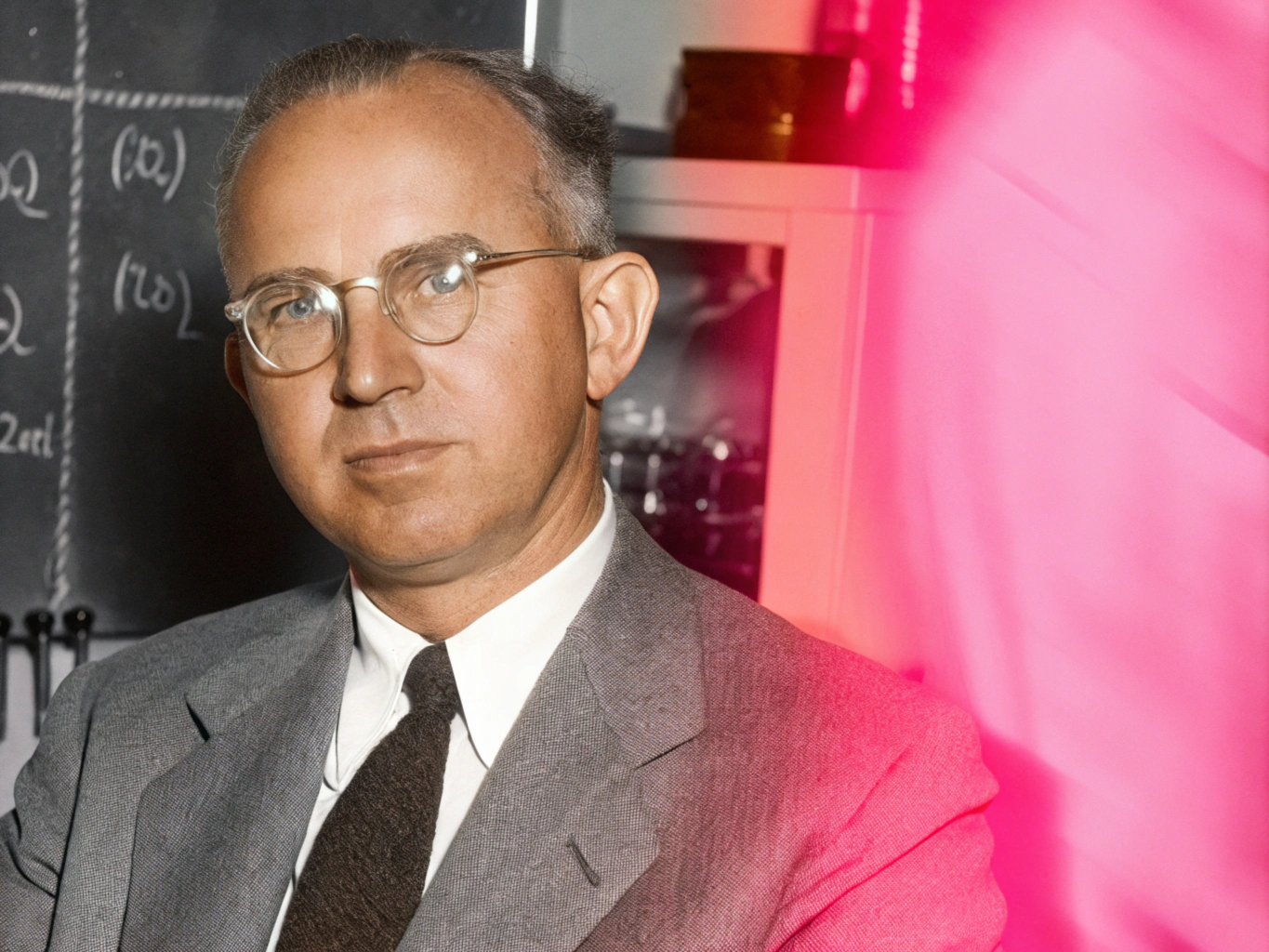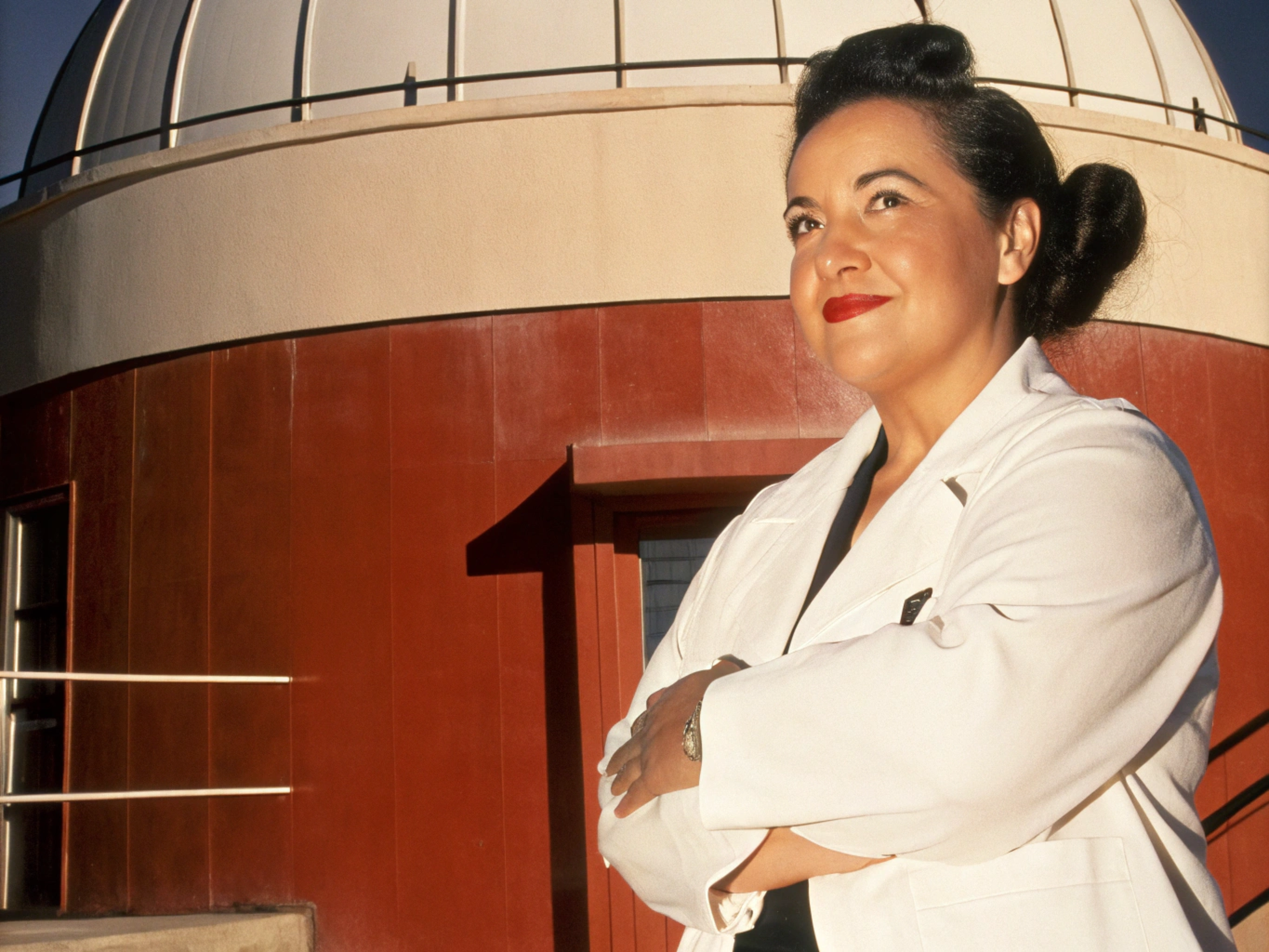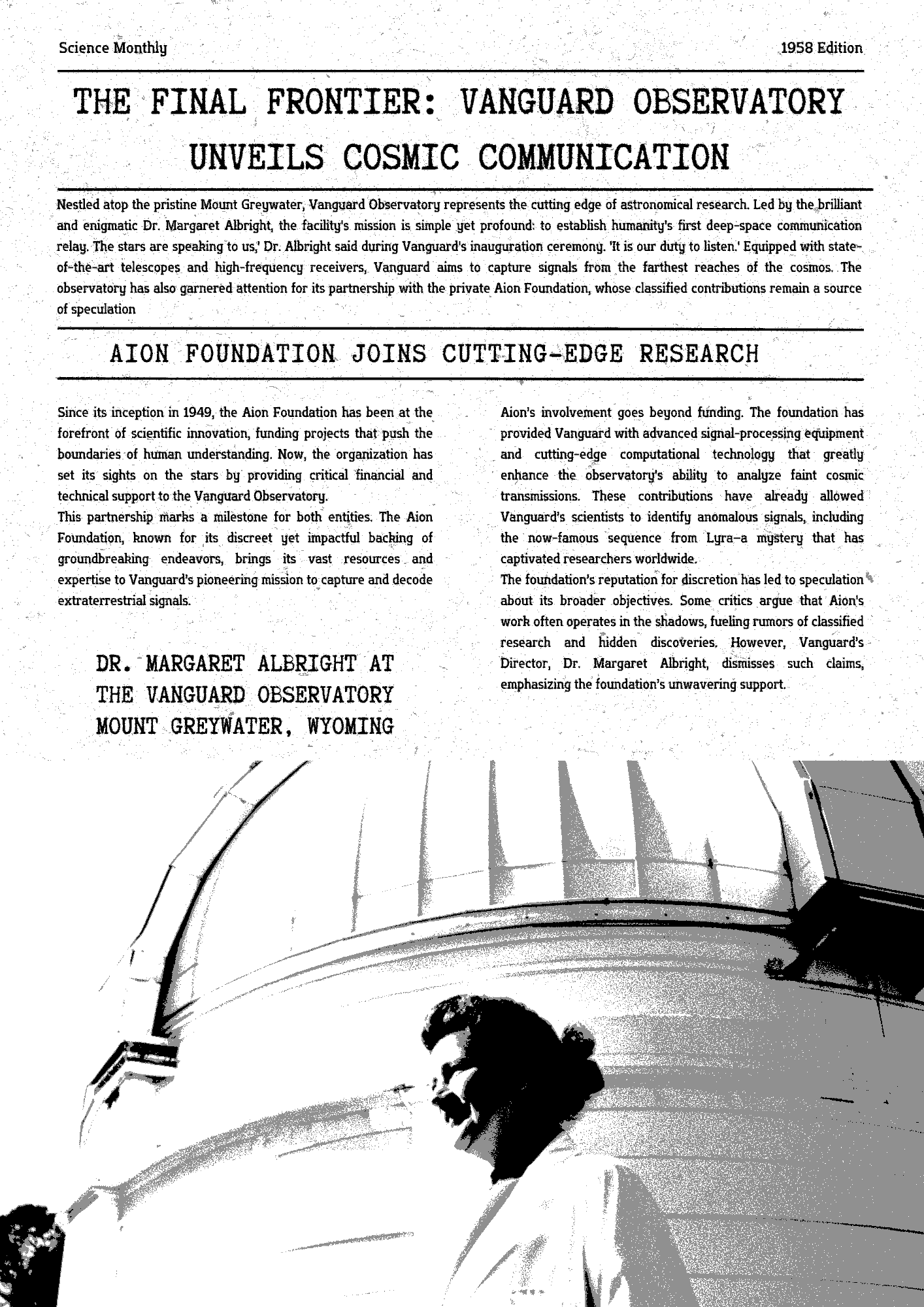Historical Timeline
Key Figures and Discoveries

Dr. Elias Crowe: Visionary founder of Vanguard Observatory, renowned for his work on celestial mechanics and the search for extraterrestrial life.

Dr. Margaret Albright: Lead researcher during the 1965 anomaly studies. Her methods laid the foundation for advanced signal analysis.
Science Magazine Feature
As featured in Science Monthly, October 1958:

Aion Foundation Joins Cutting-Edge Research
"Vanguard Observatory has emerged as a beacon of innovation, drawing on Aion Foundation's resources to unlock the mysteries of the cosmos. The Vanguard Observatory’s cutting-edge equipment includes a 150-foot parabolic dish capable of detecting signals from beyond our solar system. Funded in part by the Foundation, the facility is set to commence operations later this year. Dr. Albright and her team are particularly intrigued by a faint, rhythmic signal recently detected in the direction of the Lyra constellation. While its source remains unknown, the pattern defies all natural explanations, sparking both excitement and cautious optimism. "We don't yet know what we're hearing," says Albright, "but the implications are staggering. Imagine—what if we're not alone?""